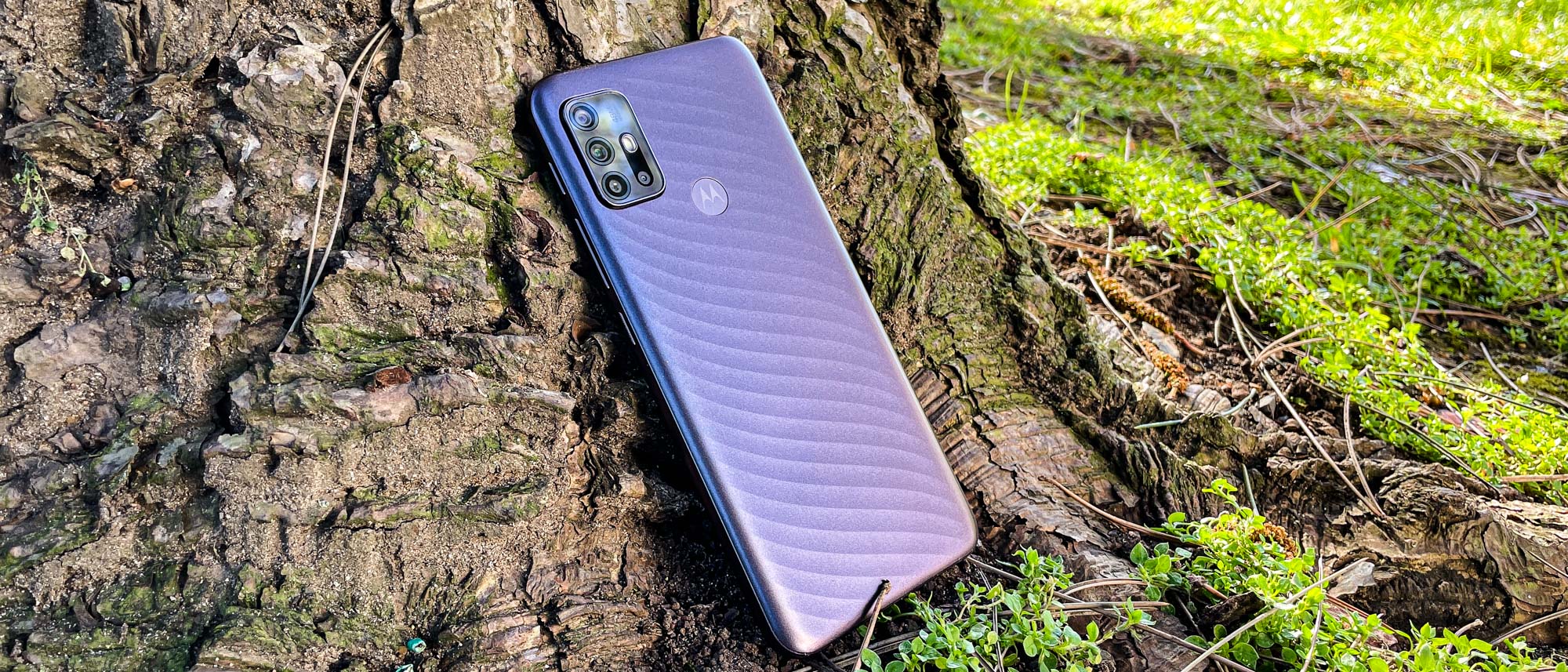Tom's Guide Verdict
You'll struggle to find a more competent phone than the Moto g10 at this price. However, as user-friendly and refined as the design is, it's hard to ignore the low-powered components when you know there are far better options out there if you’re able to spend a little more.
Pros
- +
Amazingly cheap
- +
Superb battery life
- +
Clean but helpful UI
Cons
- -
Disappointing performance
- -
Low-quality display
Why you can trust Tom's Guide
Starting price: £129.99
Display: 6.5-inch HD+ LCD (1600x720)
Rear cameras: 48MP main (f1.7), 8MP ultrawide (f2.2), 2MP depth sensor (f2.4), 2MP macro (f2.4)
Front camera: 8MP
Chipset: Snapdragon 460
RAM: 4GB
Storage: 64GB/128GB
microSD: Up to 1TB
Operating system: Android 11
Battery: 5,000 mAh
Charging: 10W wired
Colors: Aurora Grey (pictured), Sakura Pearl
Size: (165.22 x 75.73 x 9.19mm)
Weight: 7.05 ounces (200g)
IP rating: IP52
Motorola’s Moto g10 will immediately grab you because it's simply so cheap. With flagship phones selling for ten times as much as Motorola's latest budget offering, it’s refreshing to see such a capable phone at such a bargain price.
As well as Motorola's trademark excellent battery life, the Moto g100 offers a quad-camera array of rear shooters, plus a large display, all bound up in a fun-though-plastic, chassis. Forget about special features, as you would for any phone that’s well below $200.
This Moto g10 review shows how Motorola's phone can be a reliable choice if your budget is tight. But if you can spend a little more, you'll have the option of some substantially more impressive hardware — including additional Motorola handsets.
Moto g10 review: Price and availability
Motorola has already launched the Moto g10 in the U.K., where it sells on sites like the Motorola store or John Lewis for an impressively low £129. For context, the Galaxy A20e, a more basic version of the Samsung Galaxy A20, costs £149, while the Moto g9 Power, the U.K.'s equivalent of the Moto G Power (2010), goes for £179. (That phone starts at $199 in the U.S.) So even among cheap phones, the Moto g10 is a bargain. There's only a single spec to choose from, too, which simplifies your buying decision.
The Moto g10 could come to the U.S. eventually, but Motorola hasn’t hinted at when or what the price would be.
Moto g10 review: Design
You'll fall for the Moto g10's simple but fun design the moment you pick it up. The plastic material feels cheap in comparison to the classy metal and glass builds of fancier phones. But that’s understandable since we are talking about a cheap phone.

The Moto g10 still has a pleasing weight to it despite the lighter materials, and the thicker-than-average sides add some sturdiness to the phone’s feel. It gives the impression that the g10 would keep on working even if you were to drop it on accident. (We do not advise testing this theory out.) The wavy molding on the back of the phone looks kind of neat, and despite what you might think, it doesn't feel strange to hold since the edges of the phone are still smooth.
Get instant access to breaking news, the hottest reviews, great deals and helpful tips.
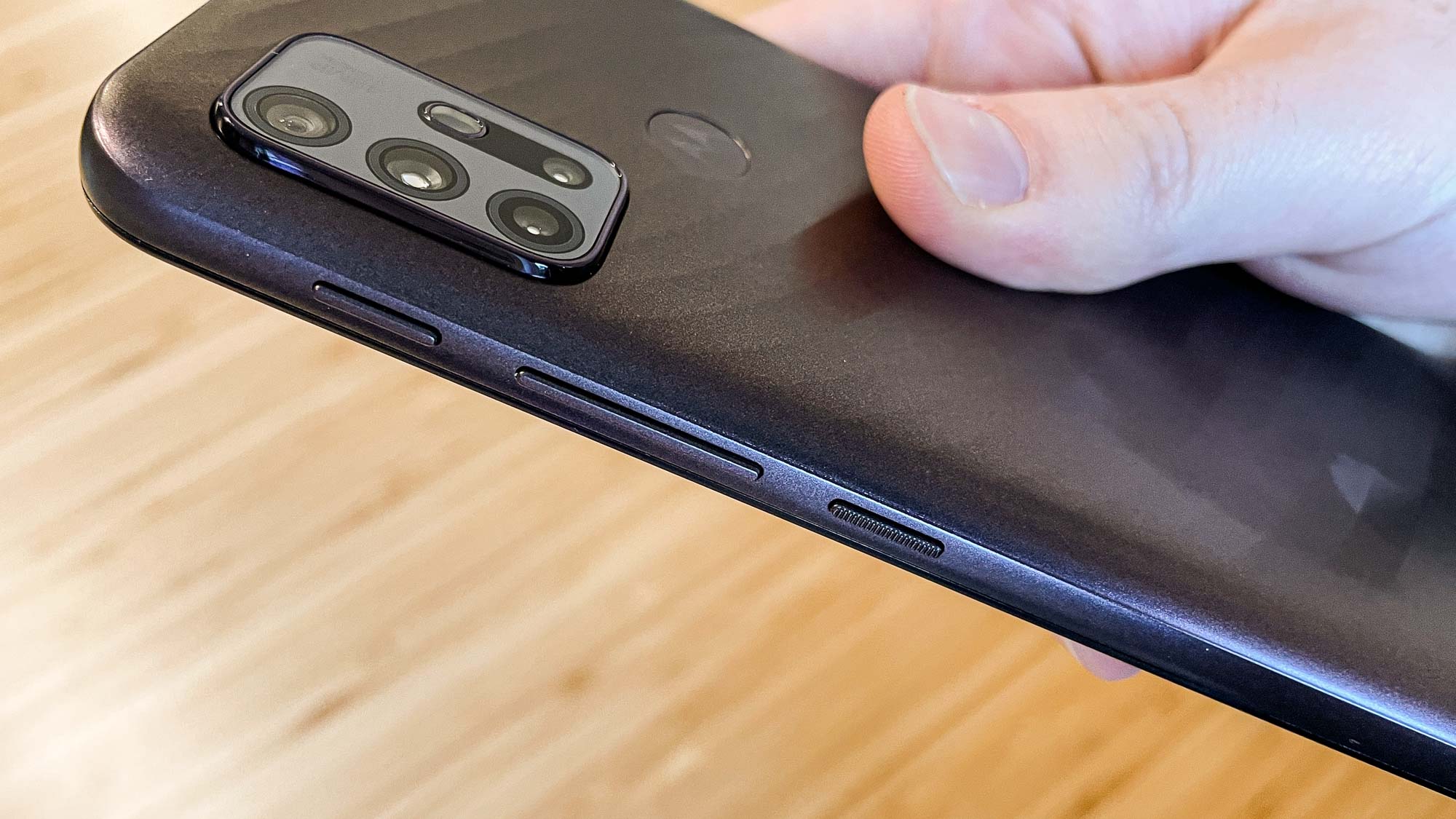
The Aurora Gray color option of my review unit has hidden depths, with the gray turning to a shiny purple in the right light. The alternative color, Sakura Pearl, looks to do the same except with a white body.

Motorola has tested the Moto g10 to the IP52 specification. That means the g10 will shrug off a rain shower, but it won't be safe against heavier spray or immersion in water.
Moto g10 review: Display and audio
At 6.5 inches, the Moto g10's display is a fair size that’s spoiled somewhat by thick bezels on all four of its sides. At least the waterdrop notch at the top holds the camera without sacrificing more screen space to a full bezel.
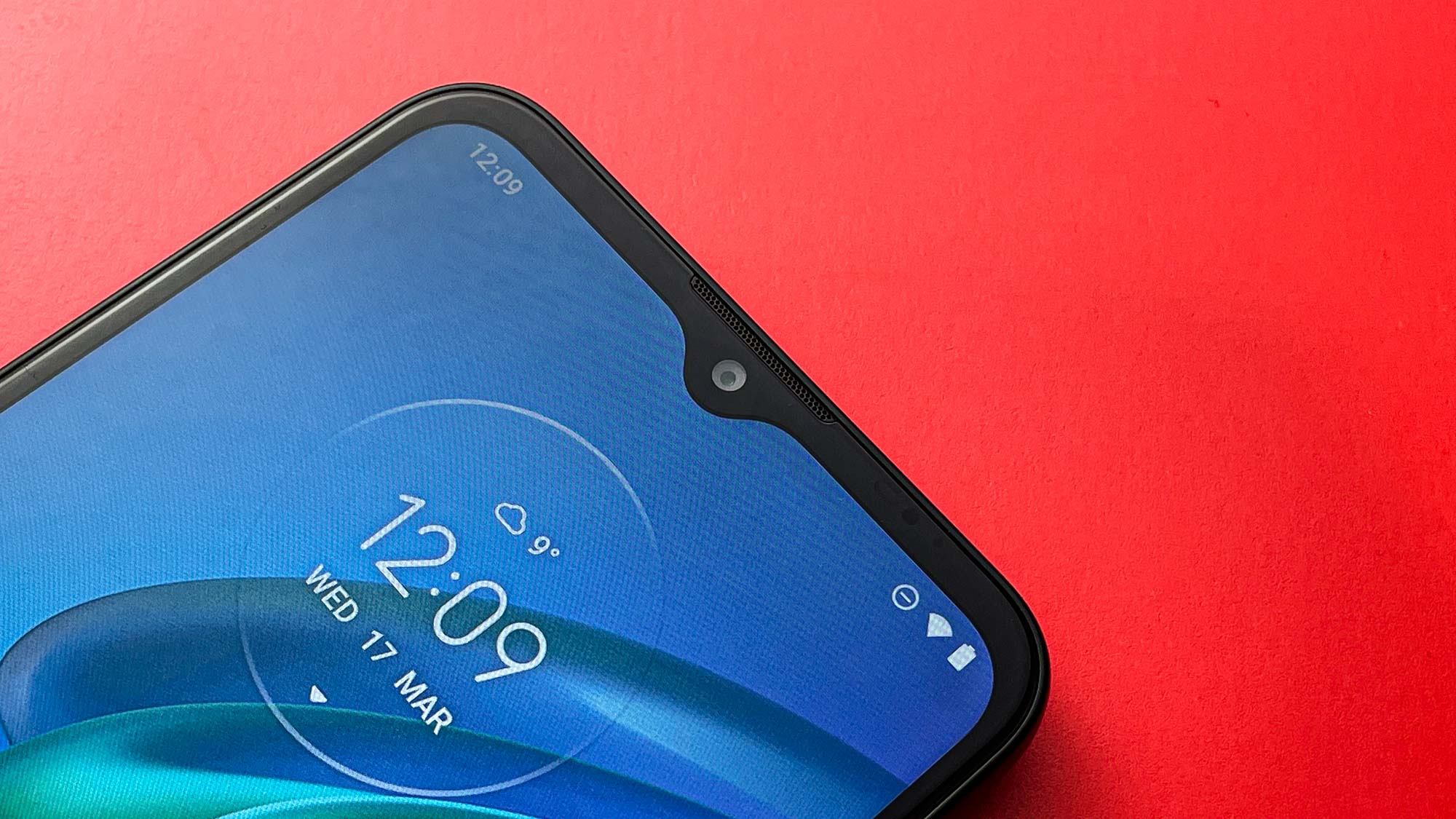
The HD+ LCD panel is far from the best I've tried on a phone. It isn't particularly bright at the best of times, and extreme angles make things even harder to see on the screen.
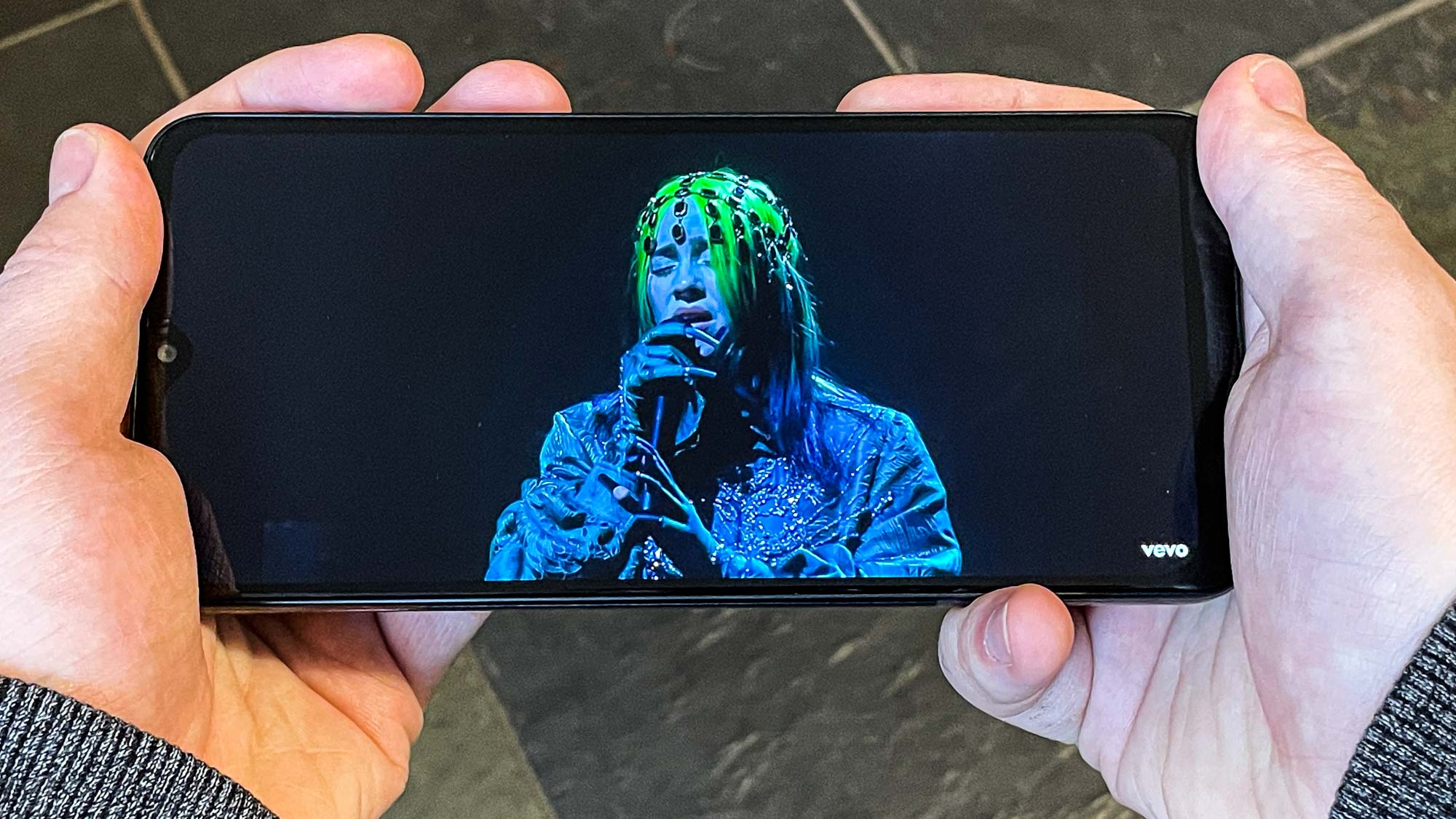
Watching Billie Eilish's rendition of "Everything I Wanted" at The Grammys 2021 looked all right, with the colors of Eilish's trademark neon-green hair popping from the screen nicely. However I did notice how dim the display was in comparison to other phones such as the similarly price Realme 7, which also uses an LCD panel. Naturally, there was also an obvious lack of detail in her glittery outfit and jewelry from the moto g10's HD display.
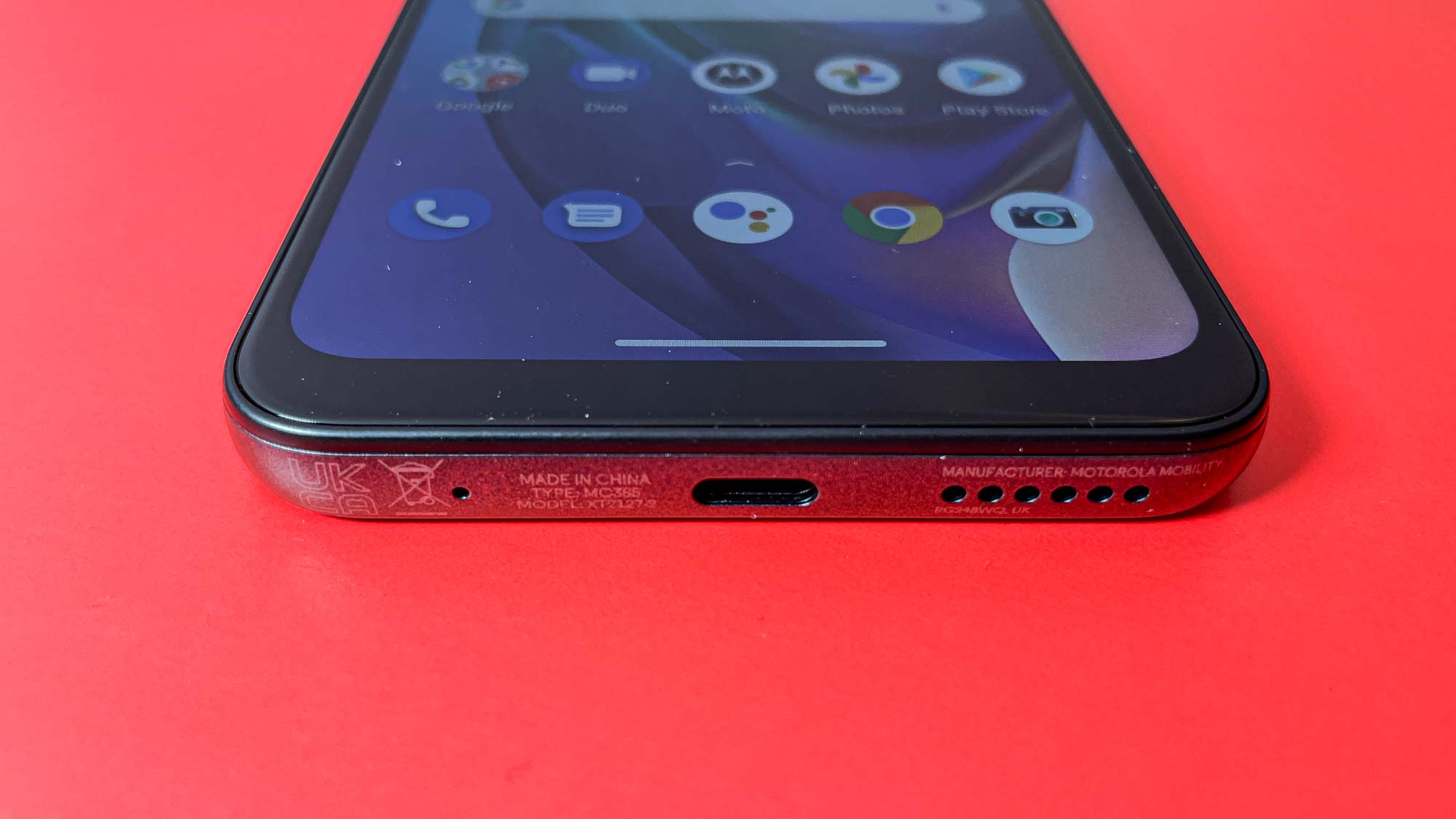
A single bottom-ported speaker on the Moto g10 offers a decent volume, reproducing Eilish's distinctive vocals loud and clear. Exploring it further with Post Malone and Swae Lee's Sunflower playing, I appreciated how nicely the chilled-out vocals came across. That came at the expense of the rest of the mix, though, with the beat and instruments feeling disappointingly muted. If that's a problem for you, then you can use the headphone jack or Bluetooth to pipe the sound through your own headphones or earbuds, which are likely much better than the Moto g10’s speaker.
Moto g10 review: Cameras
Even though the Moto g10 is a budget phone, you still have four sensors on the back of the phone. A 48MP main camera and a 8MP ultrawide angle lens lead the way, but you also get a 2MP depth sensor and a 2MP macro camera. An 8MP selfie cam on the front of the phone rounds out the optics.
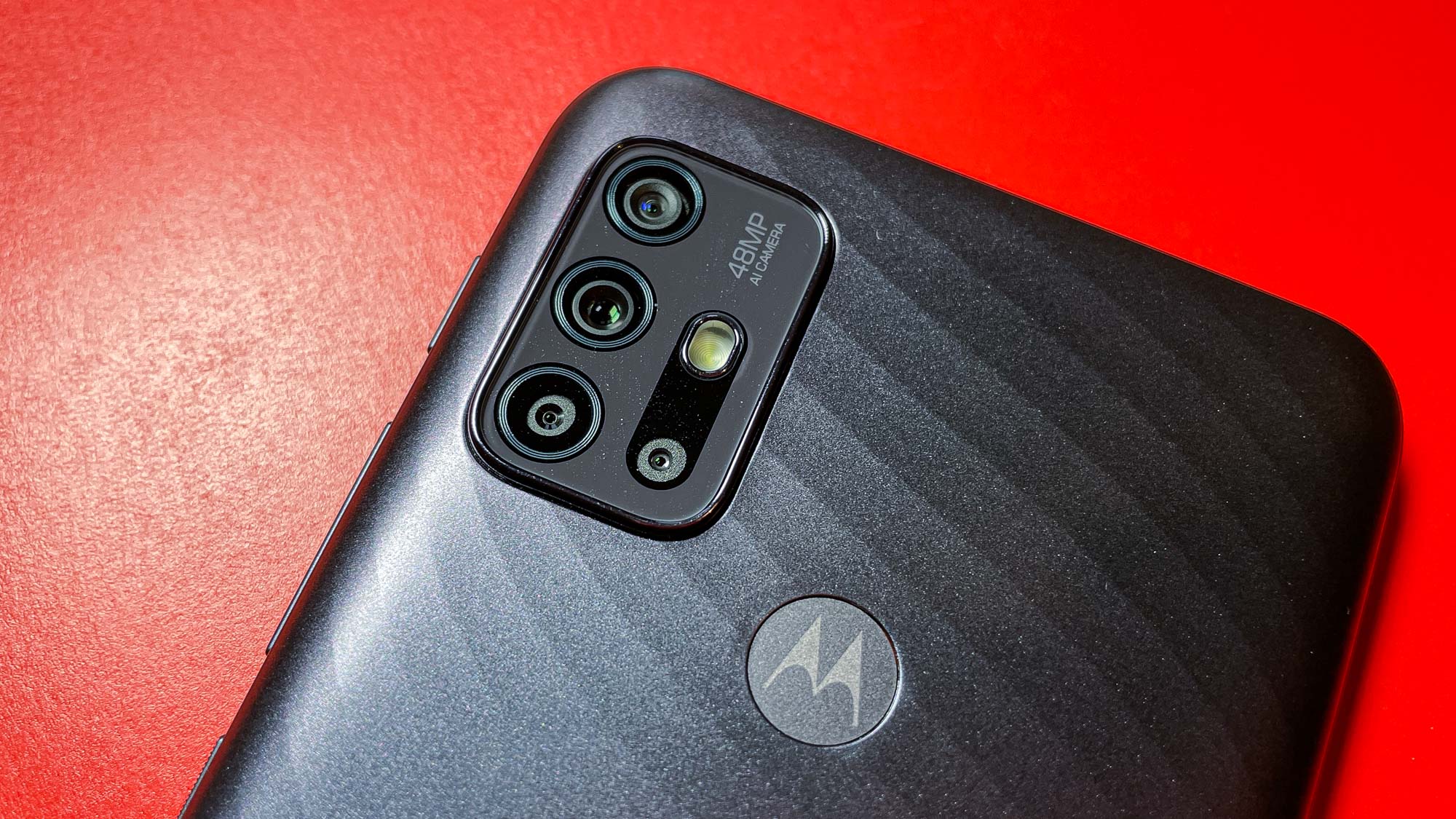
To show off the photo ability of the Moto g10, I compared it to pictures taken by the Realme 7, a phone that’s only available in the U.K. that’s pretty identical to Motorola’s handset. That should help us see how well Motorola has tuned its hardware for the best shots possible.
Testing the main cameras with a shot of a path through a park, I find it's hard to pick between images from the two phones. The Realme 7's shot is quite a lot brighter, but that comes at the expense of color. This is why on balance the Moto g10 is my preferred image.
That flips around when we try out a night mode shot. In this post-sunset image of Navigator Square at Archway, there's a lot more noise in the night sky on the g10's image, and it's a less vivid shade of blue than the one the Realme has produced. The Motorola also struggled to contain the light coming from the streetlamps, something the Realme also managed better. It seems like Motorola could improve its photo software here.
I'm torn on which image's color I prefer in this ultrawide shot of Tufnell Park Playing Fields and its surrounding apartment blocks. However, Realme's image is far noisier than Motorola's, making the Moto g10 the easy winner of this comparison.
Depth sensors are added to phones to assist with adding special effects to the primary cameras, so I turned on portrait mode when shooting this hedge sculpture to test out the ones on the Motorola and Realme. The Realme 7 required more effort to produce a shot I liked, since its depth camera offered either very dark and very bright images of this scene. The Moto g10's images were less extreme, but as a result meant I got decent color accuracy for the leafy feline while retaining background detail.
While not directly related to the quality of the image, I appreciated how the g10 offered a slider to control the intensity of the blur in portrait shots. I found the maximum setting to look the best, but being able to tailor the effect to your liking is a thoughtful inclusion.
Macro cameras on phones are notoriously finicky, so I gave these two handsets the best chance possible by using a bright light to illuminate this pile of coffee beans on my kitchen table. The Moto g10 has produced an image that more accurately captures the color of these light-roasted beans. While the Realme 7 offers similar details, the color of its shot couldn’t match the Moto g10.
When testing the front camera, the Moto g10 scores a final easy win in this selfie comparison. It gives a prettier background blur compared to the Realme, and much better colors too. I look much more natural in Motorola's image, instead of strangely pink as I do in Realme's shot.
Moto g10 review: Performance
When it comes to processor power, the Moto g10 provides the bare minimum. The Snapdragon 460 chipset and 4GB RAM are significantly less powerful than almost any other phone you can get today — the Moto G Power 2021 runs on a Snapdragon 662 for context — and that shows in the benchmarks.
The Moto g10 managed a 247 single-core score and a 1,130 multi-core score on the Geekbench 5 benchmark. That's far lower than the Moto G Power's already low 314 and 1,437. Only the equally cheap and far worse, Hot Pepper Ghost achieved lower scores of 158 and 834. For further comparison, our favorite cheap phone, the Pixel 4a, scored 551 and 1647, though that device costs a couple hundred dollars more than Motorola’s cheap handset.
It's a similar story with the 3DMark Wild Life graphics test. The Moto's result was 250 points, 1.5 frames per second, which doesn't even match up to the 372 points and 2.2 frames per second the Moto G Power got.

I attempted to play the first-person shooter Tau Ceti on the g10, and it did not go well. The game's 3D graphics appeared in their lowest quality, and even then, the Motorola phone couldn't show them at a fast-enough frame rate for me to actually play. This won't be a phone you'll want to be playing or working on beyond the very basics.
Moto g10 review: Battery life and charging
With a 5,000 mAh battery inside, the Moto g10 has a larger battery than many current flagships. And that's great news for its battery life.
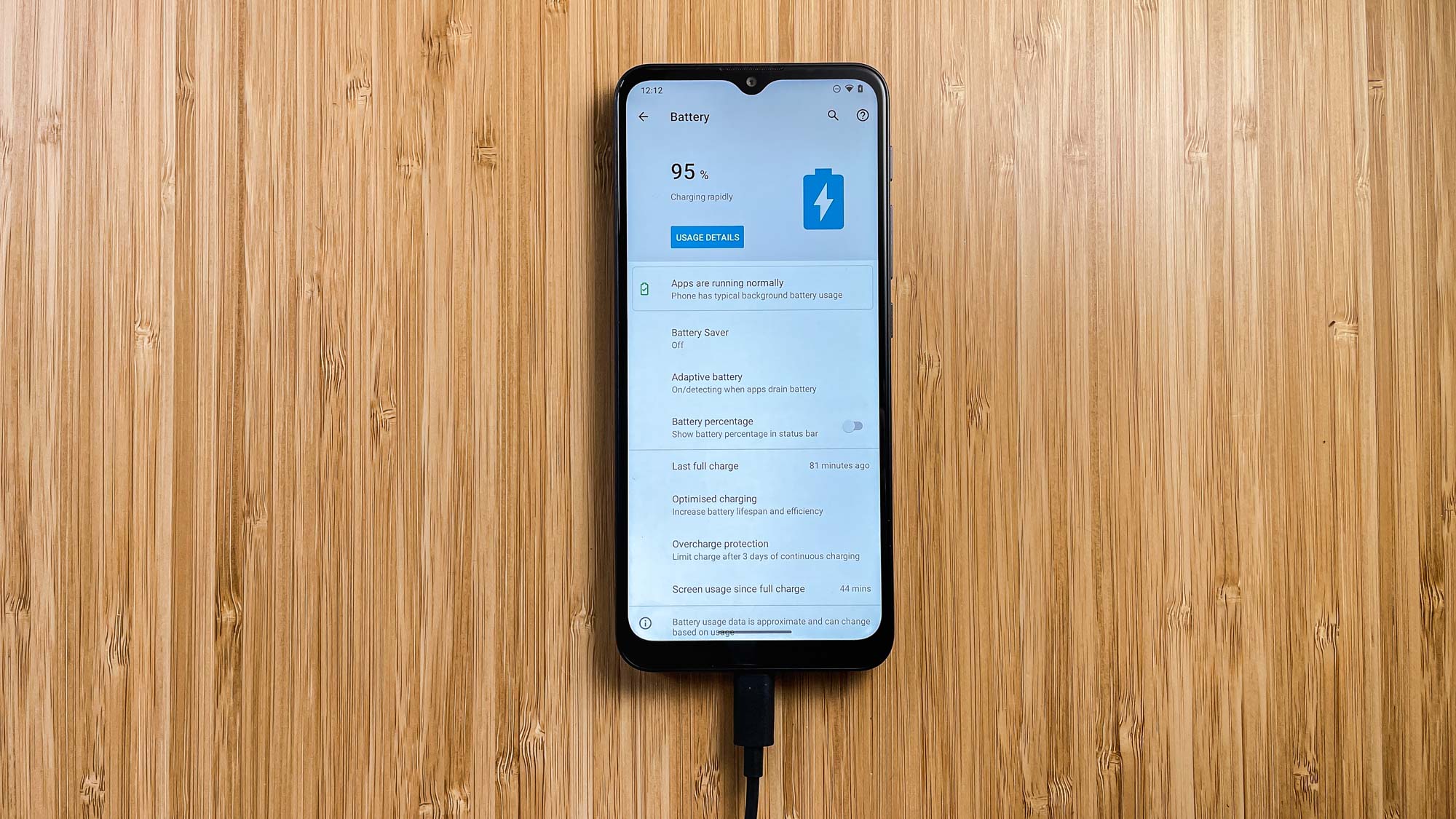
Motorola g-series phones have historically performed excellently when it comes to longevity, and the g10 is no exception. My attempt to run down the g10's battery overnight ended up in the phone playing almost 24 hours of YouTube video over Wi-Fi on the g10 non-stop before it shut itself down. Once you've powered this phone up, it's not going to empty for a while, no matter what you're doing.
Filling up the Moto g10’s massive battery takes longer. The included 10W charger gets the battery to 25% full in 30 minutes, and fills up to 100% in a glacial 2 hour and 27 minutes; that’s a similar recharge time to the current Moto G Power. It's just as well the battery is as large as it is, since you won't be able to easily top-up the g10 in a few minutes of charging.
Moto g10 review: Software
As with the last few generations of its phones, the Moto g10 runs on MyUX, which is a slightly altered version of the stock Android you'd find on a more expensive Google Pixel device. It means aside from the Moto app, you get only the basic collection of Google apps when setting up the phone, letting you tailor your home screens as you see fit.
Unfortunately, Motorola is not offering OS upgrades on the g10. It'll still get security upgrades and updates to Moto-specific apps, but you won't get any upgrade past Android 11.

The Moto app caught my attention however because of how thoroughly it explains the g10's features. The combination of easy-to-understand text, fun cartoon illustrations and the ability to try out features before returning to the app and turning them on made this perhaps the most comprehensive guide to Android I've come across. It's not something experienced users need, but if this is a first smartphone for your young kid or an elderly relative, the tips in the Moto app will make sure they quickly learn the ropes.

One other Moto-specific feature I found handy was the "Peek Display." You access this from the lockscreen by tapping one of the notification icons, which then shows a substantial chunk of the message you've been sent. If you're the kind of person who often opens up their phone to read a single email but then ends up scrolling through other apps (like me), this lets you check your notifications without needing to unlock the phone.
Before even finishing the set-up process, I grew to detest the haptic feedback the g10 gave. Rather than the crisp, popping feel of hitting keys on a Pixel 4a, you instead get a vague mushy buzz every time you type. You can turn this off, but then you're left with no feedback at all, which I think is almost worse than having bad feedback.
If you're a fan of Google Assistant, the g10 sports a dedicated button to summon the assistant for you to then command. If you don't use it, then that means there's a small portion of the right edge you should avoid pressing. You don't have the option to remap it either, only disable it.
The final criticism I have of the user experience is how slow it can be to move through the menus. This is understandable given the low-powered chipset/RAM combination, but it borders on frustrating sometimes.
Moto g10 review: Verdict
For a device that covers the basics, the Motorola Moto g10 ticks all the boxes. You have a smartly designed and easy-to-use Android skin, a battery that will last almost an entire day of constant use, plus some acceptable camera abilities, and all for a relative pittance.
You can't expect the world for this price, but some flaws in the Moto g10 experience shouldn't be ignored. The low-resolution display is dim and hard to see from all but a dead-on angle, plus the low-powered chipset means you will struggle to play the latest games or use demanding apps.
As a phone for first-time smartphone buyers, this is a brilliant device. It's eminently practical in a way that few other phones are these days, and is keen to help users learn how to make use of all of what the phone provides. If what you need is a smartphone and nothing else, the Moto g10 is the perfect utilitarian device. But if you want advanced features, you won't need to spend much more to get a well-priced but effective phone like the Pixel 4a.

Richard is based in London, covering news, reviews and how-tos for phones, tablets, gaming, and whatever else people need advice on. Following on from his MA in Magazine Journalism at the University of Sheffield, he's also written for WIRED U.K., The Register and Creative Bloq. When not at work, he's likely thinking about how to brew the perfect cup of specialty coffee.
